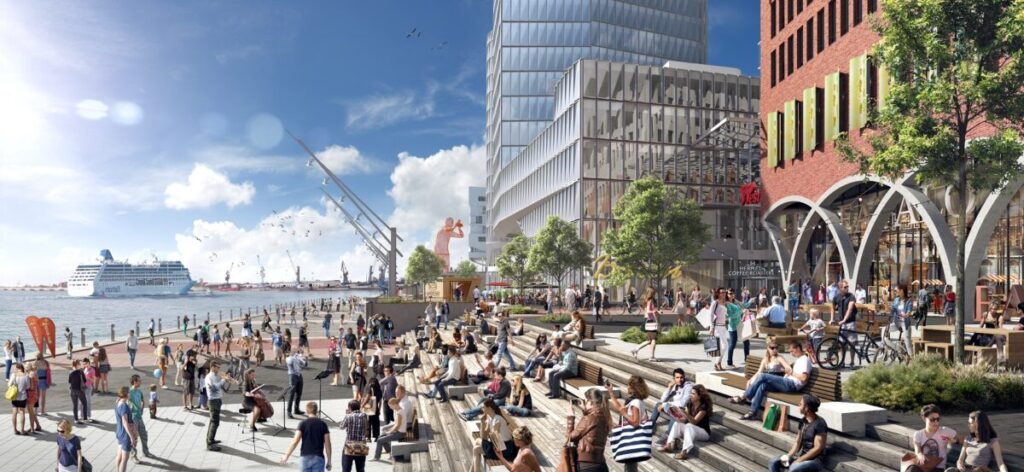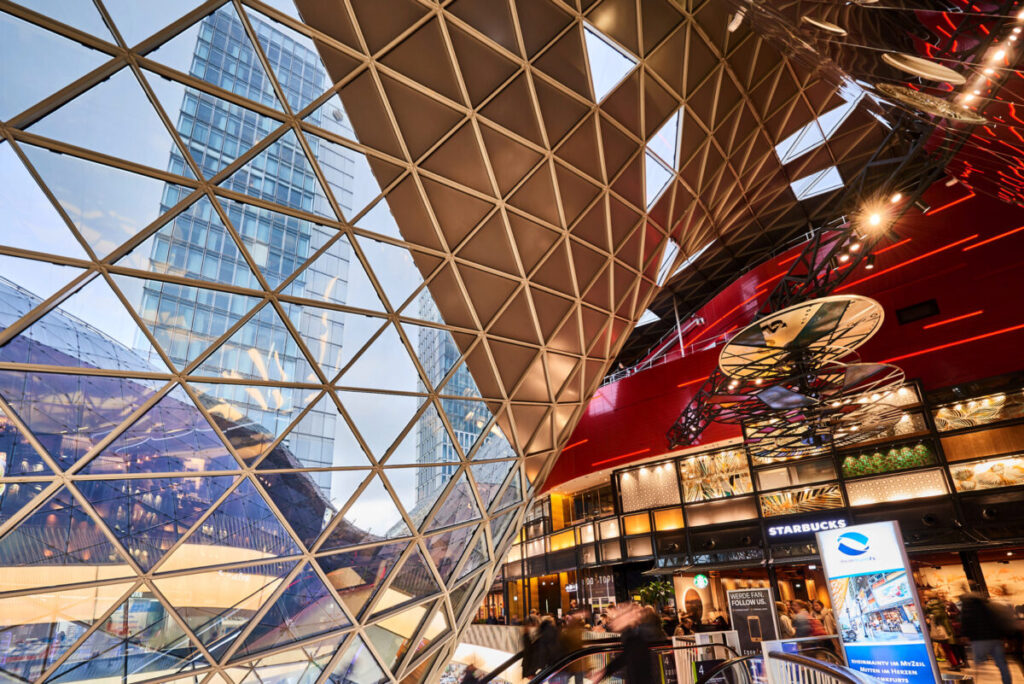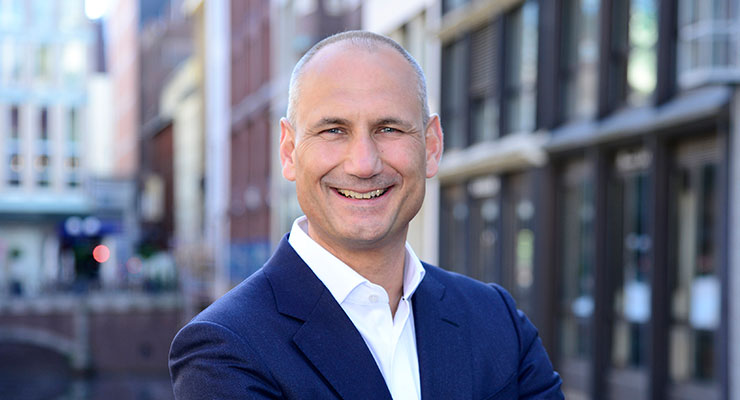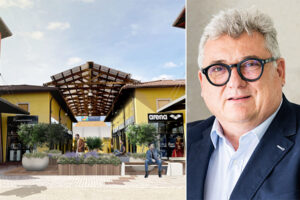ACROSS: What is, according to you, the role of shopping centers today?
UWE SEIDEL: Shopping centers still play an important role in the retail landscape, but with a changed profile. From my point of view, they score because they offer a truly personal shopping experience, social interactions, and a variety of services. All of that is hard to replicate online. The big challenge, in my view, is to credibly anchor shopping centers as meeting places in the daily lives of upcoming generations.
ACROSS: What do you think are the benefits of shopping centers to a community?
SEIDEL: Shopping centers as successful retail agglomerations primarily shape the performance of municipal retail. This effect can be seen primarily in the so-called retail centrality, which plays a vital role in inter-municipal competition. Therefore, shopping centers shape the identity of the city and “mark” the image of the municipality. And, of course, they are an employment driver within the municipality due to the high number of jobs.
ACROSS: To what extent do shopping centers shape the cityscape?
SEIDEL: Inner-city shopping centers, in particular, either pick up on historical aspects of urban development (e.g., Schlossarkaden Braunschweig) or shape central inner-city locations with their architectural signature (e.g., myZeil Frankfurt). Shopping centers with a contemporary character can become the commercial engine and heart of new urban development projects through their multifunctionality (Westfield Hamburg Überseequartier).

ACROSS: What changes on the consumer side do you think have significantly shaped the construction and design of shopping centers?
SEIDEL: I believe that, at its core, the leaps and bounds in consumer demands have driven expectations of shopping centers and, in turn, their design. The intensive use of social media via mobile devices has significantly impacted young shopping center customers’ appetite for experience. And, of course, a seamless shopping experience across different channels is seen as completely normal. Shopping centers are embracing this omnichannel approach, integrating technologies such as click-and-collect, immersive in-store experiences, and personalized marketing strategies.

ACROSS: How do shopping centers even find out where and who their community is?
SEIDEL: Classic market research methods are, of course, still used in shopping centers, whether as traditional visitor surveys, telephone surveys of households in the catchment area, or online surveys. Shopping centers use social media and online platforms to interact with their community and gather information. They can gain insights and identify trends by analyzing social media data, ratings, and comments. In addition, it pays to work closely with tenants. They usually have much more profound insights into their customer structure via their loyalty cards and customer apps: Shopping centers can better understand their community through the cooperative exchange of information.
ACROSS: How do operators and retailers stay on top of environmental and community changes?
SEIDEL: In our experience, competitive environmental changes can best be recorded using monitoring under building planning law, such as our company offers. This enables owners to identify weak signals in the regional market and quickly initiate necessary countermeasures or adjustment reactions. As far as community changes are concerned, it is essential to keep an eye on the center’s ongoing rating on Google and critical social media platforms and to anchor monitorings in comparison to key competitors regularly. In addition to Instagram and Reddit, TikTok plays a dominant role in our view.
ACROSS: What are the most important tools in assessing the environment?
SEIDEL: In our view, rolling market analyses, competitive intelligence, customer surveys, and monitoring under building planning law are the most important tools in evaluating the environment.
ACROSS: What are the key tools in community assessment?
SEIDEL: Regular visitor surveys and interviews in the center’s catchment area provide important basic data for evaluation from the community. In addition, it remains important to record the frequencies systematically and to continuously record and evaluate the movement data of customers in the center using modern tools at a small-scale level in the center and to derive measures from this. In addition, evaluating social media data is an absolute must: Likes, comments, ratings, and shares can provide insights into the opinions and interactions of the community. Experience has shown that trends and moods can be identified at an early stage as indicators of change processes.
ACROSS: Where do you see the biggest challenge in implementing and using these tools?
SEIDEL: From our point of view, the data protection regulations of the federal states represent the biggest challenge in using modern analysis tools.
ACROSS: What role does digitalization, especially omnichannel, play in this context?
SEIDEL: Digitization plays the most significant role for young consumers, mainly due to the extensive use of mobile devices in combination with the formative role of social media for the respective age cohort. Seamless shopping, in any case, has become self-explanatory from the consumer’s point of view. Like many retailers, the seamless shopping experience remains one of the biggest challenges to date: After all, it’s not just about dovetailing marketing and communications but also finding answers for merchandise availability in logistics, switching to a customer value analysis across all channels. There is still “much room for improvement” here.
ACROSS: Retailers use the internet of things primarily to increase efficiency. This contrasts with consumers’ desire for more emotion and experience. How can retailers and shopping center operators use technology to appeal to their customers emotionally?
SEIDEL: Yes, at first glance, technology and emotion are contradictory categories. First and foremost, we see the available digital tools as an invisible bond between the brands and tenants and the center and the customer. Digital solutions, therefore, help with advanced information along the customer journey, customer acquisition (activating customers for events, promotions, and news), conversion and offering personalized offers (location-based marketing), all after-sales activities and CRM (customer relationship management) in general.
ACROSS: Which existing technologies do you consider particularly promising?
SEIDEL: Currently, we are particularly excited about technologies that allow us to record and evaluate customers’ movement patterns and interactions via their mobile devices. In current consulting projects, we rely not only on classic survey instruments and modern, multivariate analysis methods but also on evaluating mobile phone data and small-scale movement data, which are made usable by new technologies. One example is the startup Ariadne, whose innovative technology enables us to capture real-time customer movement data at a spatial level of less than 1 meter, even when customers’ cell phones are switched off. In-depth knowledge of who is in the center and when is the basis for targeted location-based marketing, which has not yet been fully developed due to technical restrictions. We can expect breakthroughs in the coming months.
ACROSS: What requirements must be met for this technology to be used?
SEIDEL: In order to use modern digital technologies, you need significantly more freedom in data protection and a profound understanding on the part of the data protection officers of the countries.
ACROSS: If you had to name three key messages, what do physical trading venues need to do to excite people these days?
SEIDEL: 1. Physical retail locations such as shopping centers must become an intuitive part of the reality of life for the upcoming generations. To achieve this, young consumers must find themselves with their favorite brands, their leisure interests, and their wishes and desires.
2. 24/7 real estate: Through the multicoding of rental spaces and the enrichment of the shopping center through synergetic complementary uses from other asset classes, shopping places inspire because they develop into neighborhoods. The further development of the monofunctional shopping center into a 24-hour district will therefore be a promising step towards even greater resilience.
3. Young customers are excited by immersive brand experiences that, at best, are perceived with their own peer group. In many locations, international brands are already succeeding in brand building through a combination of desirability, curated assortments, modern store design, and the “retelling” of stories across all channels and social media. So, it comes down to selecting the right brand and tenant partners.







